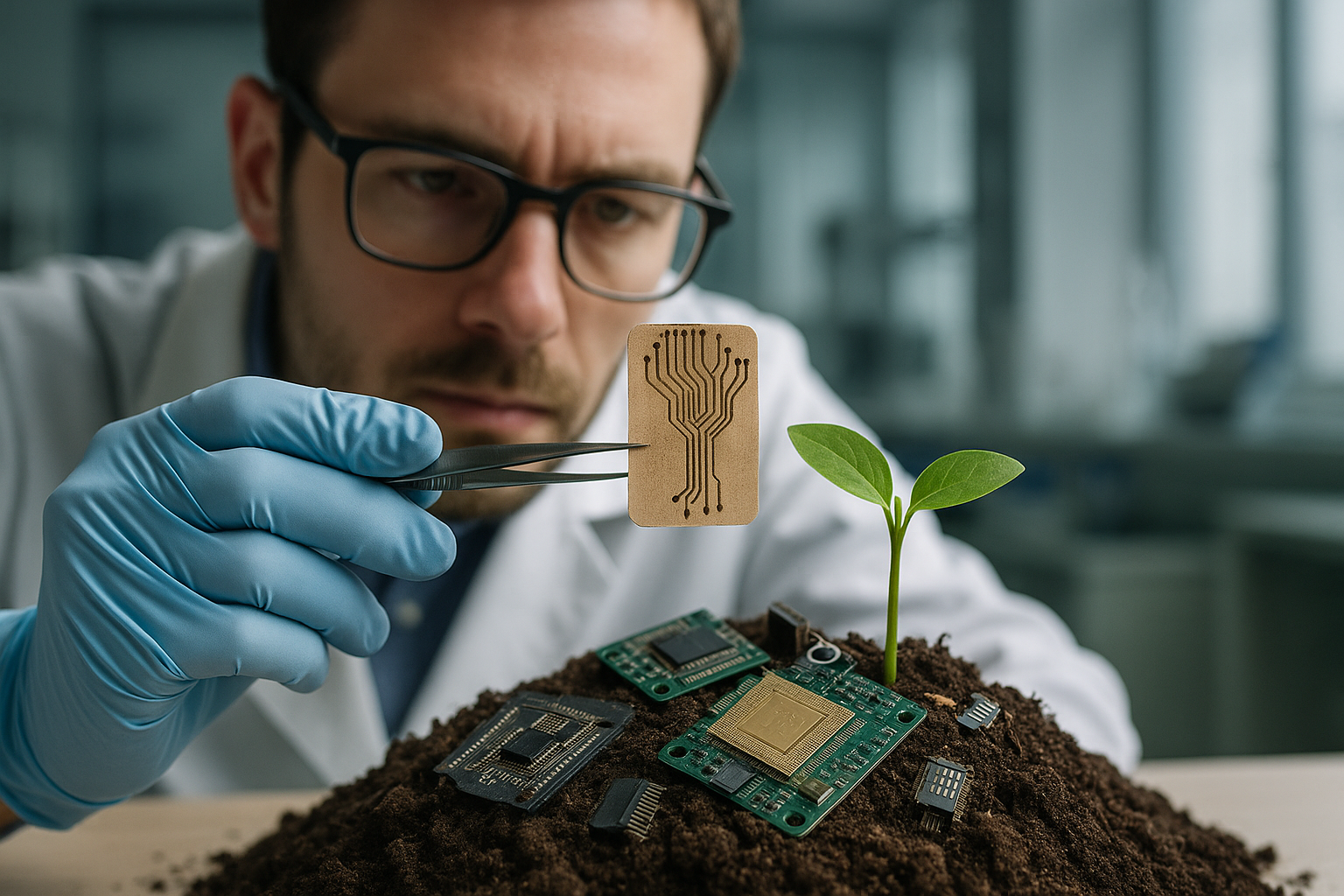Shaping the Future: The Promising Path of Biodegradable Electronics
Long before the age of smartphones and high-speed internet, the vision of a technologically advanced world was largely conceived by science fiction authors. This conception, however, has taken a sharp turn from the shiny, metal-laden landscapes of yesteryears. In the evolving narrative of technological advancement, the focus has shifted towards creating sustainable solutions that can coexist harmoniously with our environment. This shift has led to the emergence of an exciting new field: biodegradable electronics.

A Brief History: From Silicon to Biodegradable
In the early years of electronics, devices were largely made from materials such as glass, metal, and wood - materials that, for the most part, could be recycled or naturally decomposed. However, with the advent of the silicon era, the manufacturing of electronic devices took a different turn. Silicon, the heart of modern electronics, doesn’t decompose naturally. Coupled with the rapid pace of technological advancement and the resulting high turnover rate of devices, this led to a growing problem of electronic waste.
In the early 2000s, researchers began to explore the potential for biodegradable electronics. Early prototypes were rudimentary, with limited functionality and a short lifespan. However, as research continued, the technology improved. Today, biodegradable electronics promise high performance, coupled with an environmentally friendly end of life.
The Now: Biodegradable Electronics in 2022
In recent years, biodegradable electronics have made significant strides. Researchers at Stanford University, for example, have developed a biodegradable electronic device that can dissolve in water or body fluids. This device, made from silk protein and magnesium, can be used for a variety of applications, such as environmental sensors and medical implants.
Elsewhere, scientists at the University of Wisconsin-Madison have created biodegradable semiconductor chips made from a material called cellulose nanofibril (CNF). Unlike traditional silicon-based chips, CNF chips can be broken down by fungi and other microorganisms, reducing the environmental impact of electronic waste.
The Cost and Market Impact
While it’s tough to pin down the exact cost of biodegradable electronics since they’re still largely in the research and development phase, analysts predict that they could be competitively priced with traditional electronics. The global biodegradable electronics market is expected to reach $1.04 billion by 2027, growing at a compound annual growth rate (CAGR) of 16.1% from 2020 to 2027, according to a report by Allied Market Research.
Looking Ahead: The Future of Biodegradable Electronics
The future of biodegradable electronics is promising. As research continues, the scope of applications for these devices is expanding. Potential applications include temporary medical implants that dissolve in the body after they’ve served their purpose, reducing the need for secondary surgeries to remove devices. They could also be used in environmental monitoring, with devices that can collect data for a certain period and then decompose without leaving any trace.
A Sustainable Future
The journey of biodegradable electronics, from its early beginnings to its current state, is a testament to the power of human ingenuity and our ability to adapt technology to meet the demands of our changing world. While there are still challenges to overcome, the progress made so far suggests that a future where electronics can coexist harmoniously with our environment is not far off. In the end, the development of biodegradable electronics serves as a reminder that the future of technology doesn’t have to be at odds with the future of our planet.




